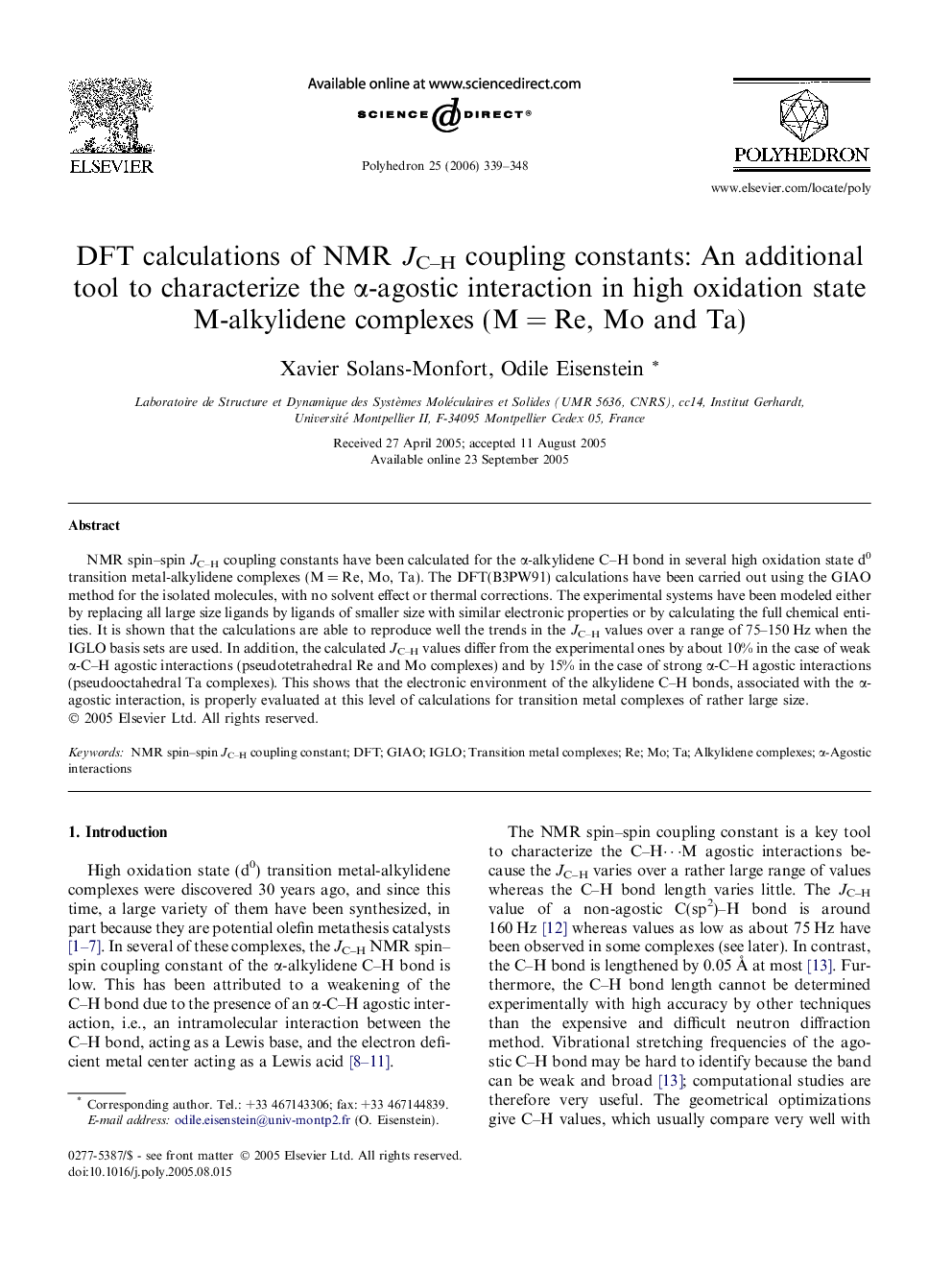| Article ID | Journal | Published Year | Pages | File Type |
|---|---|---|---|---|
| 1341014 | Polyhedron | 2006 | 10 Pages |
NMR spin–spin JC–H coupling constants have been calculated for the α-alkylidene C–H bond in several high oxidation state d0 transition metal-alkylidene complexes (M = Re, Mo, Ta). The DFT(B3PW91) calculations have been carried out using the GIAO method for the isolated molecules, with no solvent effect or thermal corrections. The experimental systems have been modeled either by replacing all large size ligands by ligands of smaller size with similar electronic properties or by calculating the full chemical entities. It is shown that the calculations are able to reproduce well the trends in the JC–H values over a range of 75–150 Hz when the IGLO basis sets are used. In addition, the calculated JC–H values differ from the experimental ones by about 10% in the case of weak α-C–H agostic interactions (pseudotetrahedral Re and Mo complexes) and by 15% in the case of strong α-C–H agostic interactions (pseudooctahedral Ta complexes). This shows that the electronic environment of the alkylidene C–H bonds, associated with the α-agostic interaction, is properly evaluated at this level of calculations for transition metal complexes of rather large size.
Graphical abstractDFT calculations have been used to calculate the spin–spin JC–H coupling constants for the C–H alkylidene bond in Re(CR)(CHR)(X)(Y), Mo(NR′)(CHR)(X)(Y) and Ta(C5R5′)(CHR)(X)(Y), where the experiment suggests a weak agostic interaction for Re and Mo and a strong agostic interaction for Ta. The calculated JC–H are in good agreement with the experiment when the IGLO basis sets are used. The calculations reproduce that JC–H is lower for the syn than for the anti isomer. They also show that JC–H depends on the metal even in the absence of agostic interaction.Figure optionsDownload full-size imageDownload as PowerPoint slide
